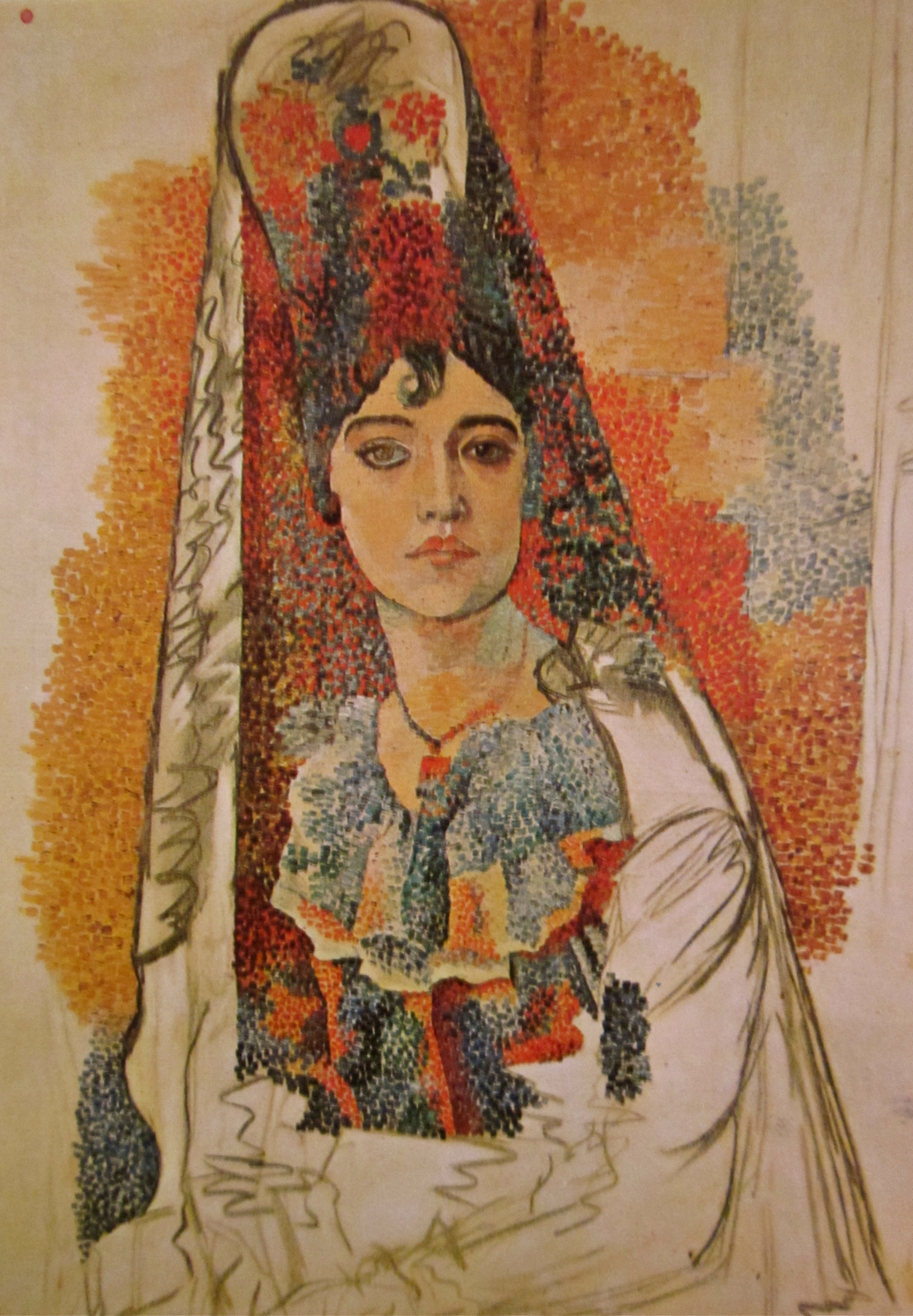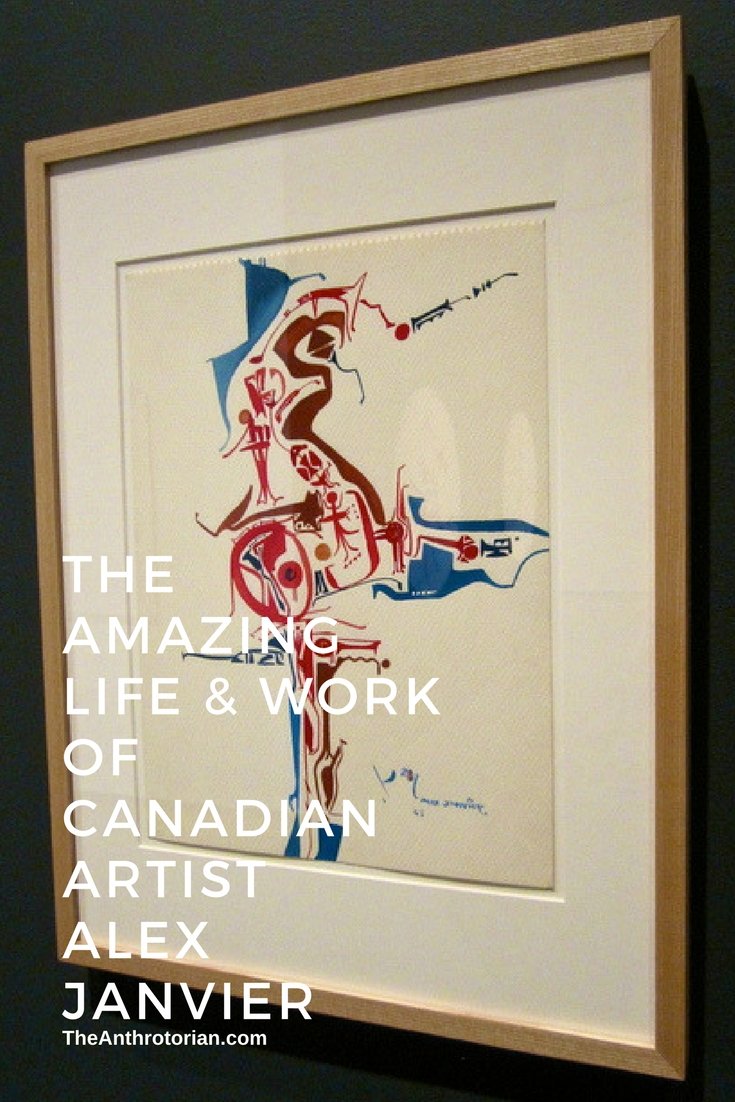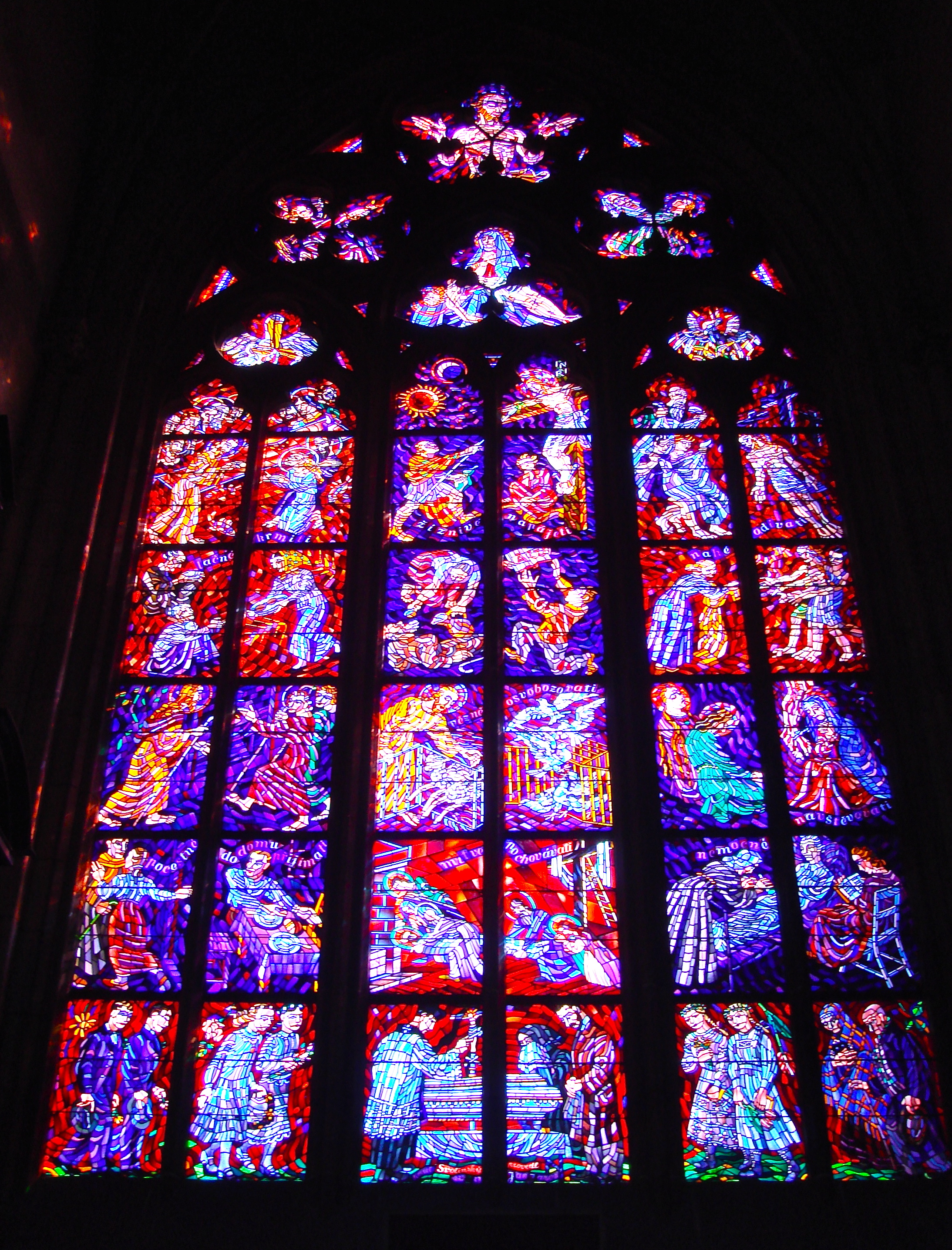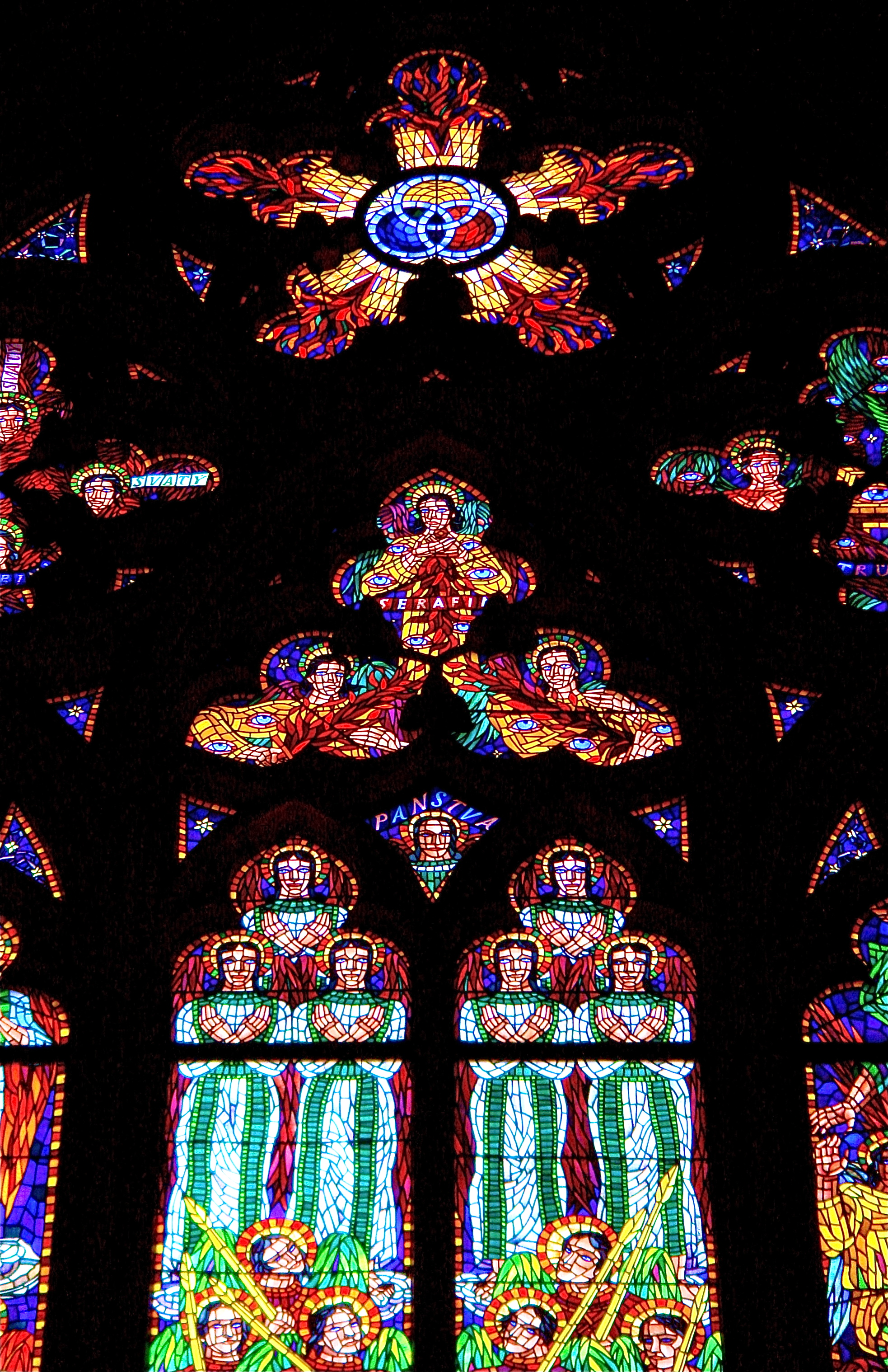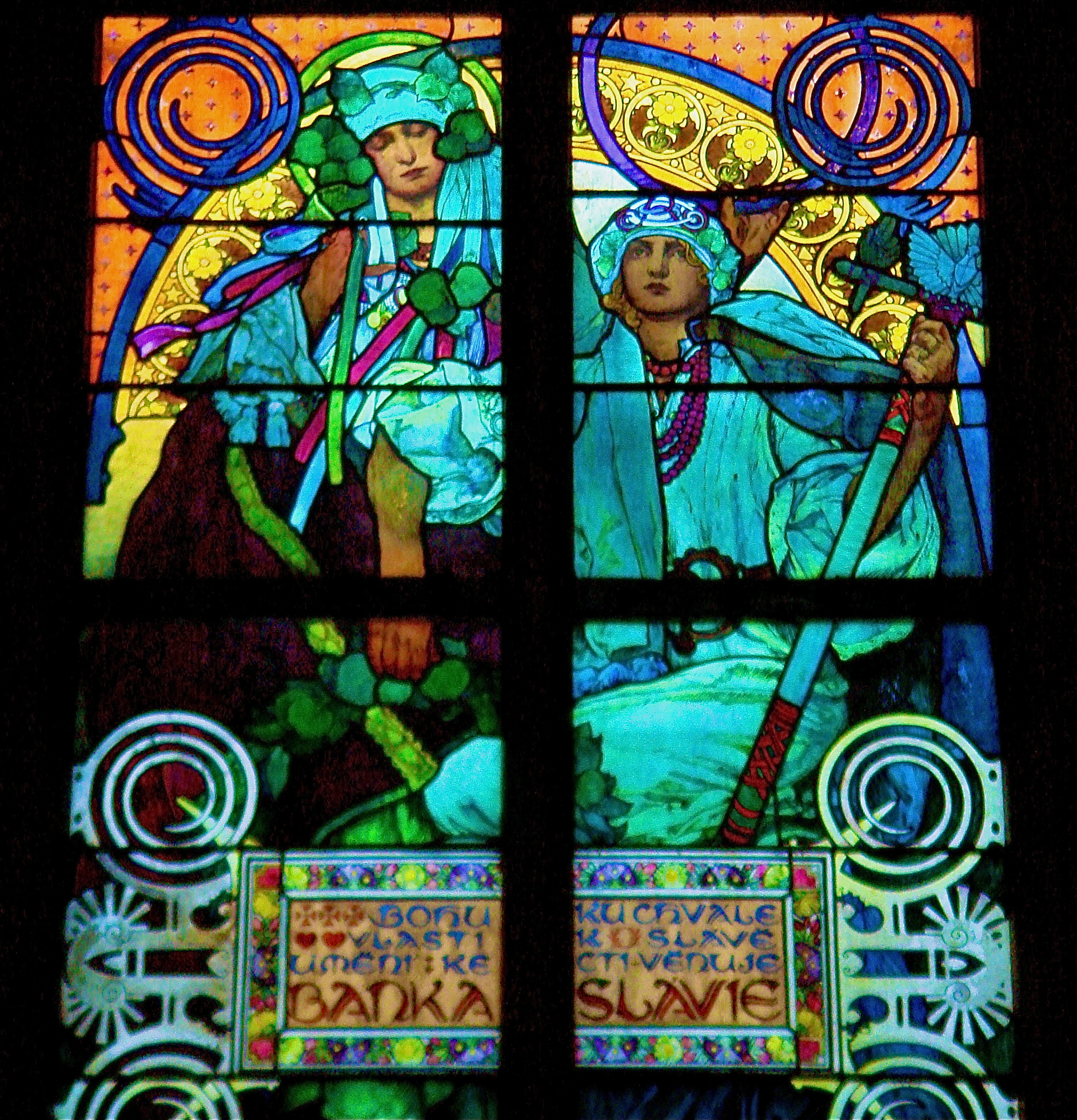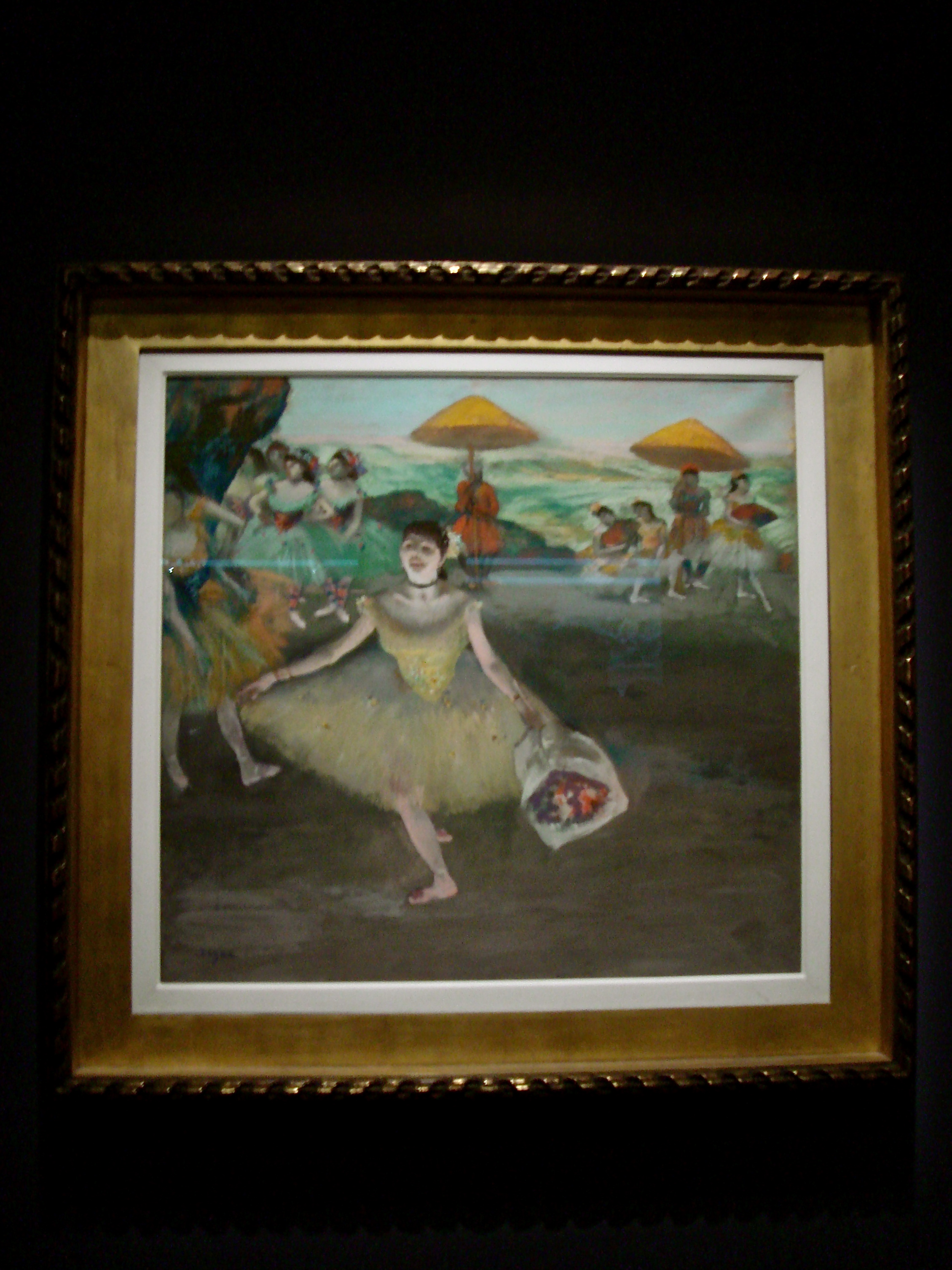Ted Godwin, a Canadian painter, rose to prominence in the 1960s as a member of the Regina Five (1958-1968). The Five were a group of abstract painters, living and working in Regina, Saskatchewan, whose work was comparable to that being created in the New York art scene at the time.
In the mid-1970s, Godwin moved away from pure abstraction to more representative painting focused on landscape. His inspiration came from the expansive prairies, vast mountains and untouched scenery of Canada.
Miz Beaver's Cafeteria and Mr. Brook Trout's Playground #6, 1980
Despite the switch to a more representative technique, many of Godwin’s paintings look like abstract paintings in disguise.
For example, the pattern, brushwork and whimsical composition of Miz Beaver’s Cafeteria and Mr. Brook Trout’s Playground #6 (above) give an abstract feel to the work. True landscapes are also usually characterized by having expansive, wide-views with clear sky-horizon-ground layouts. The perspective of this work, being so low to the ground, only adds to the abstract feel.
Other paintings by Godwin can be found in major public collections across Canada and the United Kingdom.
He has also published a handful of books, where he recognizes emerging artist’s need for a place that they can devote to making ‘art and only art.'



